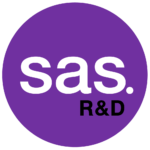The benefit is received as a corporation tax refund, or as a reduction in corporation tax payable.
Claims are submitted alongside the corporation tax return and can be made up to 2 years after the end of the period to which they relate. Many qualifying companies use the benefit to invest in further R&D activities, but they can be used for anything, which includes paying out dividends.
Broadly speaking, a project qualifies if it constitutes an “advance” in science and technology, which is defined as an improvement in overall knowledge and capability in a technical field.
A key factor in determining if a project qualifies is if uncertainty exists around the end outcome. This would typically be the case where you are attempting something that no others have achieved previously. Even unsuccessful projects can qualify for R&D tax credits.
As you would expect though, HMRC have some fairly detailed guidelines on what constitutes R&D.
We've summarised the key criteria.
Technical uncertainty
If the project presented issues that your competent professionals were unsure they would be able to overcome…
Innovation
If the project is finding a solution that is not readily available in the market, then it points to possible R&D.
Cost
If a project incurs a significant amount of expenditure (+£50k) on skilled resource, then there’s a possibility there will be R&D involved.
Qualifications
If your project requires the expertise from knowledgeable employees and/or subcontractors that hold formal qualifications then it could constitute R&D.
How much can you recover?
Profitable and lossmaking SMEs are able to recover between 14.5% and 33% of the amount they’ve spent on qualifying R&D.
Profitable SME (£) |
Loss-making SME (£) |
|
|---|---|---|
Qualifying R&D expenditure |
100,000 |
100,000 |
Enhanced deduction (130%) |
130,000 |
130,000 |
Total Corporation Tax deduction |
230,000 |
230,000 |
Corporation Tax deduction sacrificed |
– |
(230,000) |
Corporation Tax saving |
19,000 |
– |
Enhanced Corporation Tax saving |
24,700 |
– |
Cash repayment |
– |
33,350 |
Here’s a few typical R&D costs.
These are just some of the most common types of qualifying expenditure. The full list is extensive and very much dependent on the industry in question.
Subcontractor costs
Technical analysis
Management salaries
Testing
Prototyping
Developing new processes
Software licenses
Hardware costs
Premises expenses
Wondering if you qualify for R&D tax credits?
Get your free, no-obligation tax credit calculation
